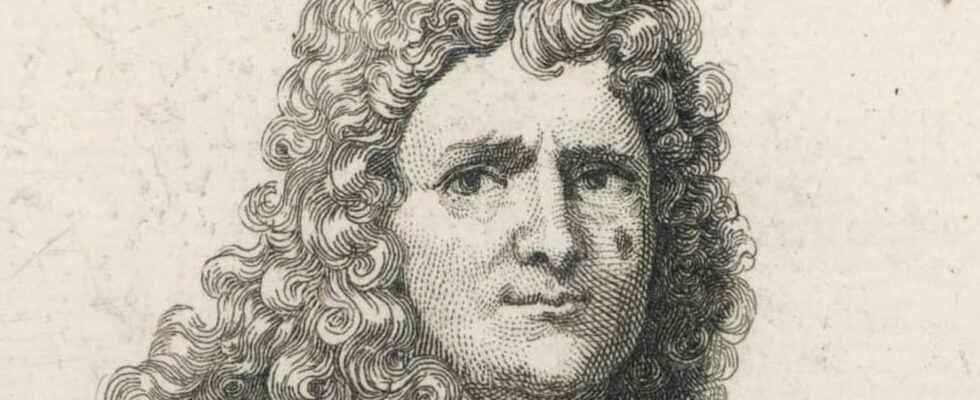Sébastien le Prestre de Vauban, architect and genius engineer, left his mark in many French regions where he shaped constructions that defy the centuries.
Tonight in Secret of History, Stéphane Bern introduces us to the Marquis Sébastien Le Prestre de Vauban. This character, still little known today, is the builder of many French buildings and fortifications of the 17th century. He also takes on the roles of engineer, essayist and military tactician. His work was recognized during his lifetime as well as after his death. In 1703, he was named Marshal of France by Louis XIV. Indeed, the military glory of the Sun King was greatly enhanced by “the great iron belt”, a revolutionary fortification, transforming the kingdom of France into a “pre-square”. Since July 2008, twelve of its works have been listed as UNESCO World Heritage sites, such as the citadel of Arras, the golden tower (or Vauban tower) in Finistère or the stronghold of Mont Dauphin, in the Hautes Alpes. . Discover this evening on France 3, the astonishing genius French builder often compared to Leonardo da Vinci.
Sébastien Le Prestre de Vauban is a famous French military engineer, best known for the effectiveness of the fortifications he designed in large numbers in the north and east of France at the end of the 17th century. He was born in Saint-Léger-de-Foucheret, a small village in the Morvan, on May 4, 1633, and died in Paris on March 30, 1703. After a career entirely dedicated to the protection and reform of the kingdom , Vauban is made marshal of France by the king Louis XIV January 14, 1703.
In 1651, at the age of 18, Vauban embarked on a military career and joined the Condé regiment under the authority of the military engineer de Clerville. Joined the Cardinal Mazarin, he was appointed king’s engineer in 1653, field marshal in 1668, then general commissioner of fortifications in 1678, after 25 years devoted to the fortification of the major cities of northern France, such as Dunkirk (1662) or Lille ( 1667). During the Dutch War (1672-1678), Vauban successfully led 53 sieges like that of Maastricht (1673), and built 300 strongholds on the borders of the kingdom. Among the most famous of his achievements, Fort Boyard is often cited, built in the open sea off the town of Rochefort. In 2008, a dozen of Vauban’s citadels were listed by Unesco as Patrimonium of mankind.
Vauban owes its reputation to the exceptional efficiency of innovative techniques, such as the reduction of blind spots by adopting a star-shaped plan, or like this system of underground trenches. In 1692, Louis XIV creates a structured body, the “military genius”, of which Vauban takes the head. Fine connoisseur of the kingdom, from 1686 Vauban began to take an interest in the institutional affairs of the country, and drafted several profound reforms, most of them unofficial, such as the liberation of trade at the borders, or even, a revolutionary fact at the time, a better distribution of taxes for the benefit of the most modest populations.
Vauban: key dates
- May 4, 1633: Birth of Vauban
- Sébastien le Prestre de Vauban was born in Burgundy.
- 1653: Vauban stands out
- Mazarin notices the young Vauban (he is only 20 years old!) and convinces him to leave the sling to serve the King.
- 1653-1659: Vauban accumulates experiences
- Vauban took part in fourteen sieges and was wounded several times. In 1655, he received the patent of Engineer of the King.
- 1667: The siege of Lille
- Vauban besieged the cities of Tournai, Douai and Lille, taken in just 9 days. The king entrusted him with the construction of the citadel of Lille, the “Queen of citadels”.
- 1667: General of the Fortifications
- Vauban exercises the functions of General of the Fortifications.
- June 29, 1673: Capture of Maastricht by France
- During the Dutch War, Louis XIV planned to invade the Netherlands. The siege of Maastricht only lasted a fortnight. It begins in the early morning of June 13. The Dutch, more numerous than the French, resist for a few days, but the Sun King’s army ends up winning the battle. During the siege, Vauban applies a new combat system that allows the French to win quickly and without suffering heavy human losses. He writes Memory on the “conduct of the seats”.
- 1679-1688: Vauban criss-crosses France
- Vauban travels through France to oversee the construction of multiple citadels, particularly in the South and on the coasts. He was made lieutenant general in 1688.
- 1689: Vauban challenges the Edict of Fontainebleau
- He wrote Mémoire sur le “rappel des Huguenots” urging Louis XIV to reconsider the revocation of the Edict of Nantes, in the name of freedom of conscience.
- June 30, 1692: Siege of Namur
- The nations of the League of Augsburg seek to conquer territories controlled by France to weaken the power of Louis XIV. Spain, the Holy Roman Empire and the United Provinces confront France during the siege of Namur. The Marshal of Luxembourg, assisted by Vauban and Boufflers, began to besiege the city on May 25, 1692, with 120,000 soldiers. A month later, Namur capitulated on June 30, 1692.
- 1694: Defense of Brittany
- He successfully organizes the defense against an English landing on the coast of Brittany.
- 1703: Marshal of France
- Vauban is elevated to the dignity of Marshal of France.
- March 30, 1707: Death of Vauban
- Sébastien Le Prestre, Marquis de Vauban, died on March 30, 1707 in Paris. Architect, engineer, town planner and hydraulic engineer, he is particularly known for his mastery of poliorcetics (art of besieging a fortress) and for having provided France with defenses against invaders, by building citadels reputed to be inviolable. Appointed marshal by Louis XIV, he worked on 180 fortresses, thus creating the “Vauban system”. In 1808, his heart was transported to the church of the Dôme aux Invalides in Paris.
